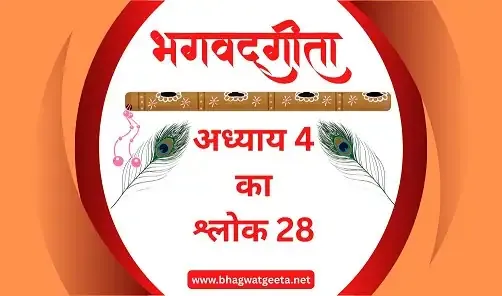Bhagavad Gita Adhyay 4 Shlok 28 में बताया गया है कि योगी विभिन्न प्रकार के यज्ञ करते हैं, जैसे द्रव्ययज्ञ, तपोयज्ञ, योगयज्ञ और स्वाध्यायज्ञानयज्ञ।
श्लोक:
द्रव्ययज्ञास्तपोयज्ञा योगयज्ञास्तथापरे ।
स्वाध्यायज्ञानयज्ञाश्च यतयः संशितव्रताः ॥२८॥
Transliteration:
dravya-yajñās tapo-yajñā yoga-yajñās tathāpare
swādhyāya-jñāna-yajñāśh cha yatayaḥ sanśhita-vratāḥ
कठोर व्रत अंगीकार करके कुछ लोग अपनी सम्पत्ति का त्याग करके, कुछ कठिन तपस्या द्वारा, कुछ अष्टांग योगपद्धति के अभ्यास द्वारा अथवा दिव्यज्ञान में उन्नति करने के लिए वेदों के अध्ययन द्वारा प्रबुद्ध बनते हैं।
Meaning:
Some undertake sacrifices by giving up their wealth through charity, some perform severe austerities, some practice the eightfold yoga system, and others become enlightened through studying the Vedas for divine knowledge.
इन यज्ञों के कई वर्ग किये जा सकते हैं। बहुत से लोग विविध प्रकार के दान-पुण्य द्वारा अपनी सम्पत्ति का यजन करते हैं। भारत में धनाढ्य व्यापारी या राजवंशी अनेक प्रकार की धर्मार्थ संस्थाएँ खोल देते हैं- यथा धर्मशाला, अन्न क्षेत्र, अतिथिशाला, अनाथालय तथा विद्यापीठ। अन्य देशों में भी अनेक अस्पताल, बूढ़ों के लिए आश्रम तथा गरीबों को भोजन, शिक्षा तथा चिकित्सा की सुविधाएँ प्रदान करने के दातव्य संस्थान हैं। ये सब दानकर्म द्रव्यमय यज्ञ हैं।
अन्य लोग जीवन में उन्नति करने अथवा उच्चलोकों में जाने के लिए चान्द्रायण तथा चातुर्मास्य जैसे विविध तप करते हैं। इन विधियों के अन्तर्गत कतिपय कठोर नियमों के अधीन कठिन व्रत करने होते हैं। उदाहरणार्थ, चातुर्मास्य व्रत रखने वाला वर्ष के चार मासों में (जुलाई से अक्टूबर तक) बाल नहीं कटाता, न ही कतिपय खाद्य वस्तुएँ खाता है और न दिन में दो बार खाता है, न निवास-स्थान छोड़कर कहीं जाता है। जीवन के सुखों का ऐसा परित्याग तपोमय यज्ञ कहलाता है।
कुछ लोग ऐसे भी हैं, जो अनेक योगपद्धतियों का अनुसरण करते हैं यथा पतंजलि पद्धति (ब्रह्म में तदाकार होने के लिए) अथवा हठयोग या अष्टांगयोग (विशेष सिद्धियों के लिए)। कुछ लोग समस्त तीर्थस्थानों की यात्रा करते हैं। ये सारे अनुष्ठान योग यज्ञ कहलाते हैं, जो भौतिक जगत् में किसी सिद्धि विशेष के लिए किये जाते हैं।
कुछ लोग ऐसे हैं, जो विभिन्न वैदिक साहित्य यथा उपनिषद् तथा वेदान्तसूत्र या सांख्यदर्शन के अध्ययन में अपना ध्यान लगाते हैं। इसे स्वाध्याय यज्ञ कहा जाता है। ये सारे योगी विभिन्न प्रकार के यज्ञों में लगे रहते हैं और उच्चजीवन की तलाश में रहते हैं। किन्तु कृष्णभावनामृत इनसे पृथक् है क्योंकि यह परमेश्वर की प्रत्यक्ष सेवा है। इसे उपर्युक्त किसी भी यज्ञ से प्राप्त नहीं किया जा सकता, अपितु भगवान् तथा उनके प्रामाणिक भक्तों की कृपा से ही प्राप्त किया जा सकता है। फलतः कृष्णभावनामृत दिव्य है।
These sacrifices can be classified into many types. Many people perform yajnas by donating their wealth in various forms of charity. In India, wealthy merchants or royal families establish numerous philanthropic institutions such as dharamshalas (rest houses), food distribution centers, guesthouses, orphanages, and educational institutions. Similarly, other countries have hospitals, old-age homes, and charitable organizations providing food, education, and medical facilities to the needy. All these charitable acts are material yajnas.
Others perform austerities like Chandraayana and Chaturmasya to progress in life or to attain higher realms. These involve strict disciplines such as not cutting hair, refraining from certain foods, eating only once a day, and not leaving the residence during the period. This renunciation of worldly comforts is called tapasya yajna.
Some follow various yoga systems like the Patanjali system (to merge in Brahman), Hatha Yoga, or Ashtanga Yoga for special accomplishments. Many undertake pilgrimages to holy places. These rituals are called yoga yajnas, done for attaining specific powers in the material world.
Others devote themselves to the study of sacred texts like the Upanishads, Vedanta Sutras, or Samkhya philosophy. This is called Svadhyaya yajna (self-study sacrifice). All such yogis engage in various yajnas seeking higher life goals.
However, Krishna Bhavana (consciousness) is distinct from all these because it is the direct service of the Supreme Lord. It cannot be attained through any of these sacrifices but only by the grace of God and His genuine devotees. Hence, Krishna Bhavana is divine.

एक टिप्पणी भेजें